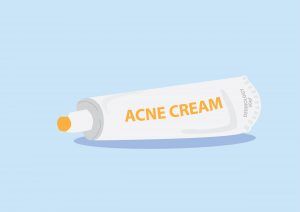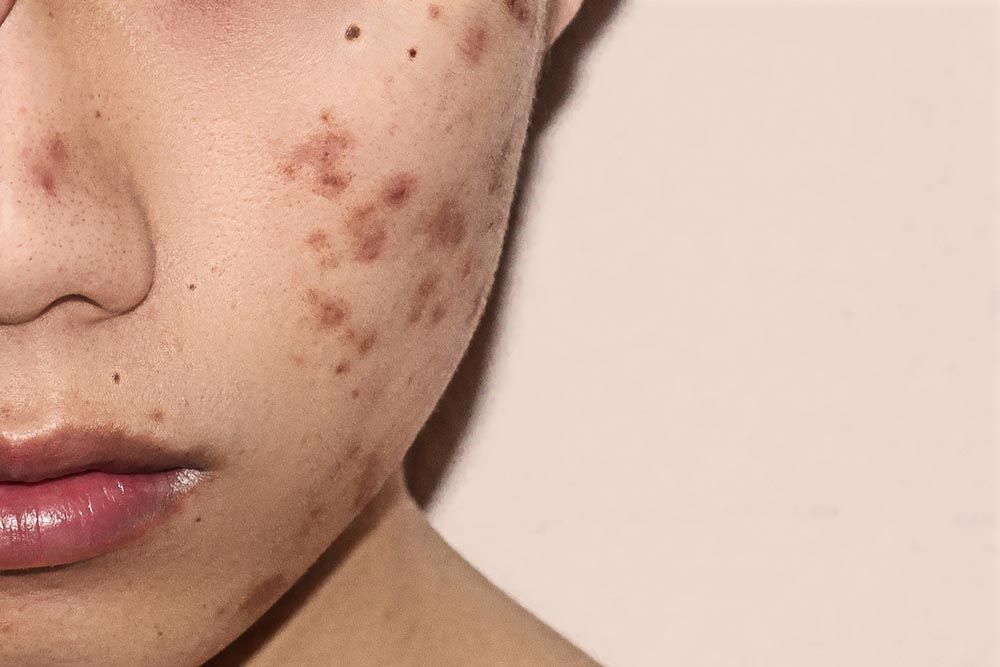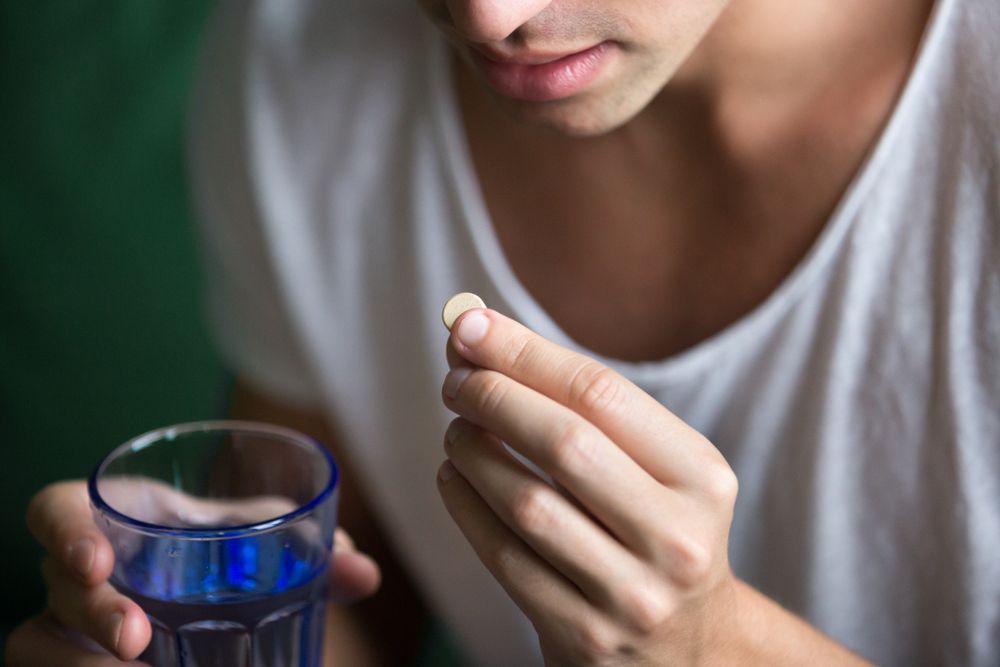Acne is the most common skin condition among Americans. It is a myth that you should simply let it run its course.(Learn More)
There isn’t a single cause of acne. Acne can result when the pores in your skin get clogged by dead skin cells. Excess sebum oil can cause dead skin to clump together, which in turn can block the pores. This can cause inflammation and bacteria to form. Hormones also contribute to acne. (Learn More)
There are many medications that can help with acne in 2022. These medications can be broadly put into two categories: topical and oral.
The topical medications commonly used to treat acne are retinoids, antibiotics, azelaic acid, salicylic acid, and dapsone. Oral medications, which tend to have more serious side effects, commonly used for acne treatment include antibiotics, combined oral contraceptives, anti-androgen agents, and isotretinoin. (Learn More)
There are a few nonmedication-based procedures that can help with acne, including laser and photodynamic therapy, chemical peels, and the extraction of whiteheads and blackheads. These can supplement acne treatment, but each has their own problems. (Learn More)
Acne should be addressed with a treatment plan. If it’s not, it can cause scarring and other issues. Don’t be afraid to speak to a doctor about your options and how to best deal with your acne problem. (Learn More)
What is Acne?
Acne is the most common skin condition among Americans, according to the American Academy of Dermatology. There are many myths about acne, one of the most common being that you should simply let it run its course.
While it is true that many people struggle with acne as teens or young adults and then see few symptoms later, treating your acne problem now can improve self-confidence and prevent scarring and future problems (discussed below).
Causes
Acne is caused by the pores in your skin getting clogged. Normally, as skin dies, it rises to the surface of your pores. It is then shed naturally by the body. Sometimes, sebum (an oil the body uses to stop skin from dying out) is produced in excess.
Excess sebum can cause dead skin to clump together, clogging pores and leaving them vulnerable to a host of problems. Bacteria can get in, causing inflammation. If the inflammation goes deep enough, acne cysts or nodules can form.
Anyone can struggle with acne, even though it is more common in teens and young adults.
Medications to Get Rid of Acne

Generally, acne is treated with medication. These are usually topical treatments, meaning they are applied directly to the affected area, but oral treatments exist too. If over-the-counter products are proving ineffective for more than a few weeks, consult a dermatologist about prescription medications.
Some topical treatments frequently used to fight acne include:
- Retinoids and retinoid-like drugs. These include Avita, Retin-A, Differin, Tazorac, and Avage. These drugs are derived from vitamin A and help to prevent plugging of the hair follicles, which can then clog pores. It is applied a few times a week at first, with doses increasing as your body gets used to it.
- These include Benzaclin, Duac, and Acanya. While usually not enough on their own, antibiotics can help to combat the bacteria that leads to redness and swelling.
Often, antibiotics are used in conjunction with retinoids at first, applying one in the morning and the other at night. Benzoyl peroxide is often part of such treatments, as it can prevent antibiotic resistance, which is a concern with any antibiotic treatment. - Azelaic acid. This has antibacterial properties, and it can be used as an effective twice-a-day cream. It’s usually used in a 20 percent solution. There are even types that are good for those who are pregnant and breastfeeding, such as Azelex and Finacea. While generally mild, these medications can cause skin discoloration and irritation.
- Salicylic acid. This acid may help to prevent plugged hair follicles. It is understudied and may not be as effective as sometimes thought. It is difficult to recommend at this time, although it may help some people.
- Also known by the brand name Aczone, dapsone comes in a gel that is recommended for inflammatory acne. It is used to treat a variety of skin conditions due to its antibacterial and anti-inflammatory properties.
It can cause redness, dryness, oiliness, and peeling of the skin. It is not recommended for patients under 12 years old.
Oral treatments used to fight acne include:
- Oral antibiotics are generally reserved for cases of moderate to severe acne, as there is a real risk of developing antibiotic resistance. This can potentially be very dangerous if you later need antibiotics for a life-threatening treatment. This resistance can also make antibiotics ineffective for you as an acne treatment. Otherwise, oral antibiotics are similar in nature to topical antibiotics.
- Combined oral contraceptive. Examples include Ortho Tri-Cyclen and Yaz. Some contraceptives have been approved for use as acne therapy in women who also otherwise wish to be on contraceptives.
This treatment can take a few months to show benefits, and it is often used in conjunction with other treatments in the initial weeks. Contraceptives can cause weight gain, breast tenderness, and nausea, as well as an increased risk of serious blood clots. - Anti-androgen agents. These agents, such as Aldactone, can be helpful for women when antibiotics aren’t working. They block the effect of androgen hormones on the sebaceous glands, hence their name. They can lessen deep-seated acne on the jawline, neck, and lower portion of the face.
Anti-androgen agents can cause breasts to develop in men. As a result, they are not prescribed to them. - Brands include Amnesteem, Claravis, and Sotret. This powerful drug is for when other treatments are proving ineffective.
It can cause ulcerative colitis, an increased risk of depression and suicide, and severe birth defects. For these reasons, doctors are very careful to prescribe it. They must monitor patients closely who are using it.
Alternatives to Acne Medicine
There are a variety of therapies that are also used to treat acne, including:
- Laser and photodynamic therapy.
- Chemical peels.
- Extraction of whiteheads and blackheads.
While these treatments can certainly help some, they all have problems. Laser and photodynamic therapies are understudied, chemical peels do not produce long-lasting results; and the extraction of problem areas can cause scarring.
This is not to say that these treatments are without value — just be aware of their downsides and bring up any concerns with your dermatologist beforehand.
Reasons to Seek Treatment
Many people are embarrassed seeking help for acne, feeling it might seem vain or like “not a real” medical issue. While acne is not life-threatening, and it can go away on its own, failing to get it treated can cause long term damage, such as scarring.
Medical assistance, including a diagnosis and treatment plan from a doctor, is the best approach to addressing serious acne in 2022. Get help as soon as you notice the problem to prevent future issues.
References
Acne: Diagnosis & Treatment. (December 27, 2018). Mayo Foundation for Medical Education and Research (MFMER).
Acne: Overview. American Academy of Dermatology.
Acne: Diagnosis and Treatment. American Academy of Dermatology.
Acne: Who Gets and Causes. American Academy of Dermatology.
Dapsone. American Osteopathic College of Dermatology (AOCD).
Stubborn Acne? Hormonal Therapy May Help. American Academy of Dermatology.



